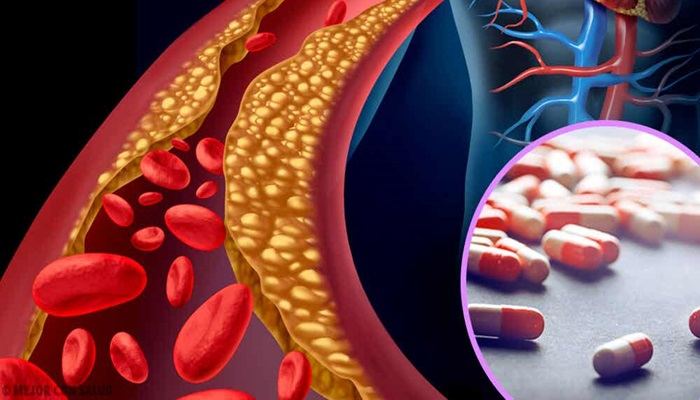Mixed hyperlipidemia, coded as E78.2 in the International Classification of Diseases (ICD-10), is a metabolic disorder characterized by elevated levels of cholesterol and triglycerides in the blood. This condition, also known as combined hyperlipidemia, is a significant risk factor for cardiovascular diseases, including coronary artery disease, stroke, and peripheral artery disease.
What Is Mixed Hyperlipidemia E78.2?
A type of familial lipid metabolism disorder characterized by a variable pattern of elevated plasma cholesterol and/or triglycerides. Multiple genes on different chromosomes may be involved, such as the major late transcription factor (upstream stimulatory factors) on chromosome 1.
SEE ALSO: Which Body System Is Responsible for Hyperlipidemia?
Causes And Risk Factors
Mixed hyperlipidemia can be caused by genetic and environmental factors. One of the most common genetic causes is familial combined hyperlipidemia (FCHL), an inherited disorder that affects lipid metabolism. Environmental factors such as diet, lifestyle, and other health conditions also play significant roles.
Genetic Factors:
Familial Combined Hyperlipidemia (FCHL): This is the most prevalent genetic disorder associated with mixed hyperlipidemia. It is characterized by the overproduction of VLDL by the liver, leading to elevated LDL and triglyceride levels.
Genetic Variants: Certain genetic mutations can influence lipid metabolism, contributing to mixed hyperlipidemia.
Environmental and Lifestyle Factors:
Diet: High intake of saturated fats, trans fats, and cholesterol can increase lipid levels. Diets rich in processed foods, red meat, and sugary beverages are particularly detrimental.
Physical Inactivity: Sedentary lifestyle reduces the body’s ability to metabolize lipids efficiently.
Obesity: Excess body weight, particularly abdominal obesity, is strongly associated with dyslipidemia.
Alcohol Consumption: Excessive alcohol intake can elevate triglyceride levels.
Smoking: Smoking affects lipid metabolism and contributes to higher LDL and lower high-density lipoprotein (HDL) cholesterol levels.
Other Health Conditions:
Diabetes Mellitus: Insulin resistance and high blood sugar levels can alter lipid metabolism.
Hypothyroidism: An underactive thyroid gland can lead to elevated cholesterol levels.
Kidney Disease: Chronic kidney disease can affect lipid levels in the blood.
Liver Disease: Conditions like non-alcoholic fatty liver disease (NAFLD) can disrupt lipid metabolism.
Symptoms And Diagnosis
Mixed hyperlipidemia is often asymptomatic, meaning individuals may not experience noticeable symptoms until cardiovascular complications arise. Routine blood tests are crucial for early detection and management. Symptoms, when they occur, are typically related to complications such as:
Chest Pain (Angina): Due to reduced blood flow to the heart.
Xanthomas: Fatty deposits under the skin, particularly around the eyes, elbows, and knees.
Pancreatitis: Severe abdominal pain if triglyceride levels are extremely high.
Diagnostic Tests:
Lipid Panel: This blood test measures total cholesterol, LDL cholesterol, HDL cholesterol, and triglycerides. Elevated levels of LDL, VLDL, and triglycerides, along with low levels of HDL, suggest mixed hyperlipidemia.
Genetic Testing: In cases of suspected familial combined hyperlipidemia, genetic testing can identify specific mutations.
Additional Tests: Tests for thyroid function, liver enzymes, and blood glucose levels help identify underlying conditions contributing to dyslipidemia.
Management And Treatment
The management of mixed hyperlipidemia involves lifestyle modifications, medication, and addressing underlying conditions. The primary goals are to lower LDL cholesterol, reduce triglycerides, and increase HDL cholesterol to reduce cardiovascular risk.
Lifestyle Modifications:
Diet: Adopt a heart-healthy diet rich in fruits, vegetables, whole grains, and lean proteins. The Mediterranean diet and the DASH (Dietary Approaches to Stop Hypertension) diet are particularly beneficial.
Physical Activity: Engage in regular aerobic exercise, such as brisk walking, cycling, or swimming, for at least 150 minutes per week.
Weight Management: Achieve and maintain a healthy weight through diet and exercise.
Smoking Cessation: Quit smoking to improve lipid levels and overall cardiovascular health.
Limit Alcohol: Reduce alcohol consumption to lower triglyceride levels.
Medications:
Statins: These drugs are the first-line treatment for lowering LDL cholesterol. They also have a modest effect on reducing triglycerides.
Fibrates: These medications are effective in lowering triglycerides and can also increase HDL cholesterol.
Omega-3 Fatty Acids: High-dose prescription omega-3 fatty acids can significantly reduce triglyceride levels.
Niacin: This vitamin can lower LDL and triglycerides while raising HDL cholesterol, but its use is limited due to side effects.
PCSK9 Inhibitors: These injectable medications lower LDL cholesterol significantly and are used in high-risk patients or those who do not respond to statins.
Ezetimibe: This drug reduces the absorption of cholesterol from the intestine and is often used in combination with statins.
Addressing Underlying Conditions:
Diabetes Management: Controlling blood sugar levels through diet, exercise, and medication helps improve lipid profiles.
Thyroid Treatment: Managing hypothyroidism with appropriate thyroid hormone replacement can normalize cholesterol levels.
Liver and Kidney Disease: Treating these conditions can help manage dyslipidemia.
Prognosis And Complications
The prognosis for individuals with mixed hyperlipidemia depends on the effectiveness of management strategies and adherence to treatment. With proper treatment, many people can achieve significant reductions in lipid levels and lower their risk of cardiovascular events.
Complications of Untreated Mixed Hyperlipidemia:
Atherosclerosis: Accumulation of plaques in the arteries, leading to narrowed and hardened arteries.
Coronary Artery Disease: Reduced blood flow to the heart, potentially causing heart attacks.
Stroke: Blocked or reduced blood flow to the brain, leading to ischemic strokes.
Peripheral Artery Disease: Reduced blood flow to the limbs, causing pain and potentially leading to limb amputation.
Pancreatitis: Severe inflammation of the pancreas due to extremely high triglyceride levels.
Conclusion
What is Mixed Hyperlipidemia E78.2? Mixed hyperlipidemia E78.2 is a complex lipid disorder characterized by elevated levels of LDL cholesterol, VLDL cholesterol, and triglycerides. It is a significant risk factor for cardiovascular diseases and requires comprehensive management, including lifestyle modifications, medication, and addressing underlying health conditions. Early detection and consistent treatment can significantly reduce the risk of complications and improve long-term outcomes for individuals with this condition.


